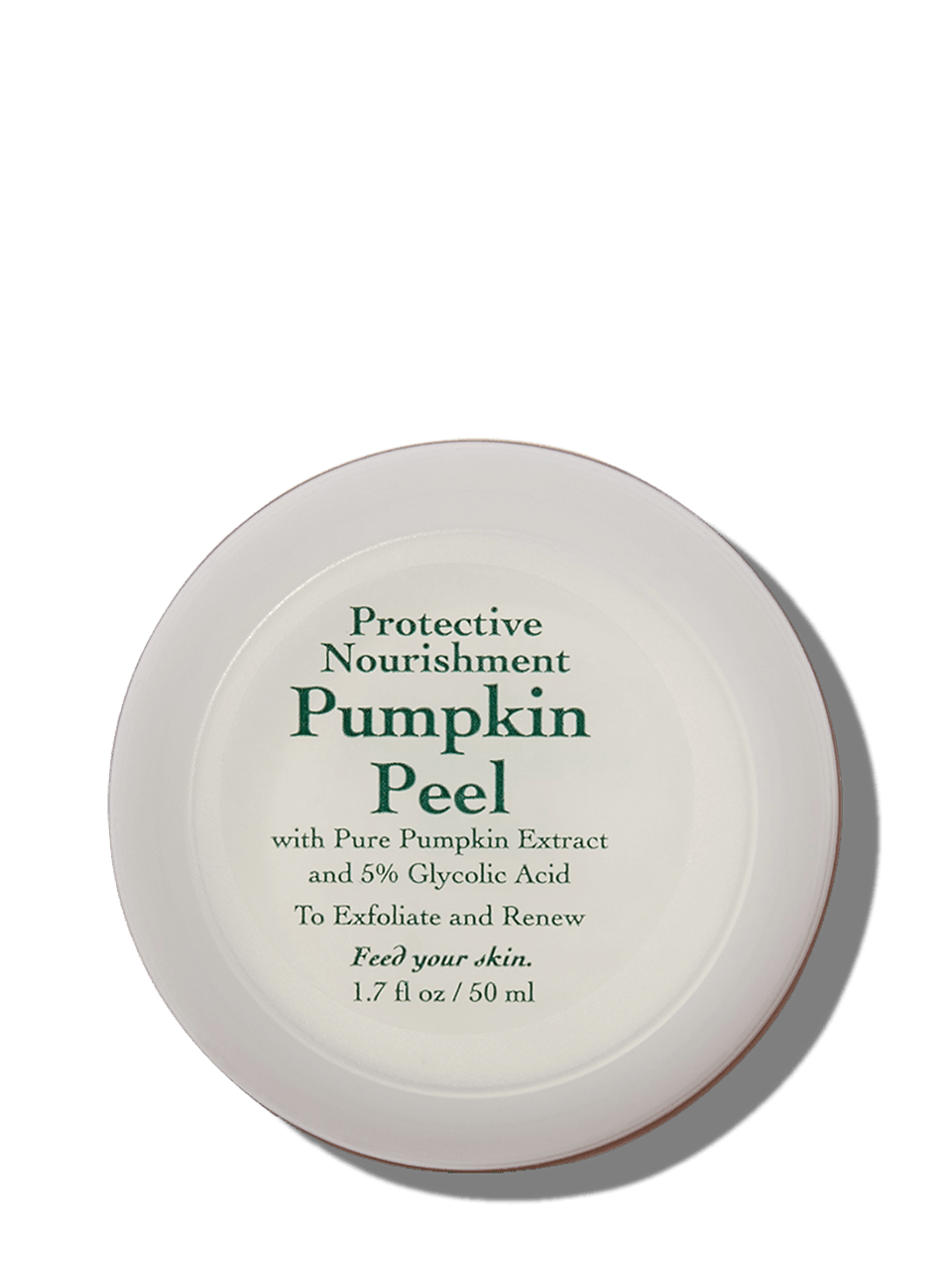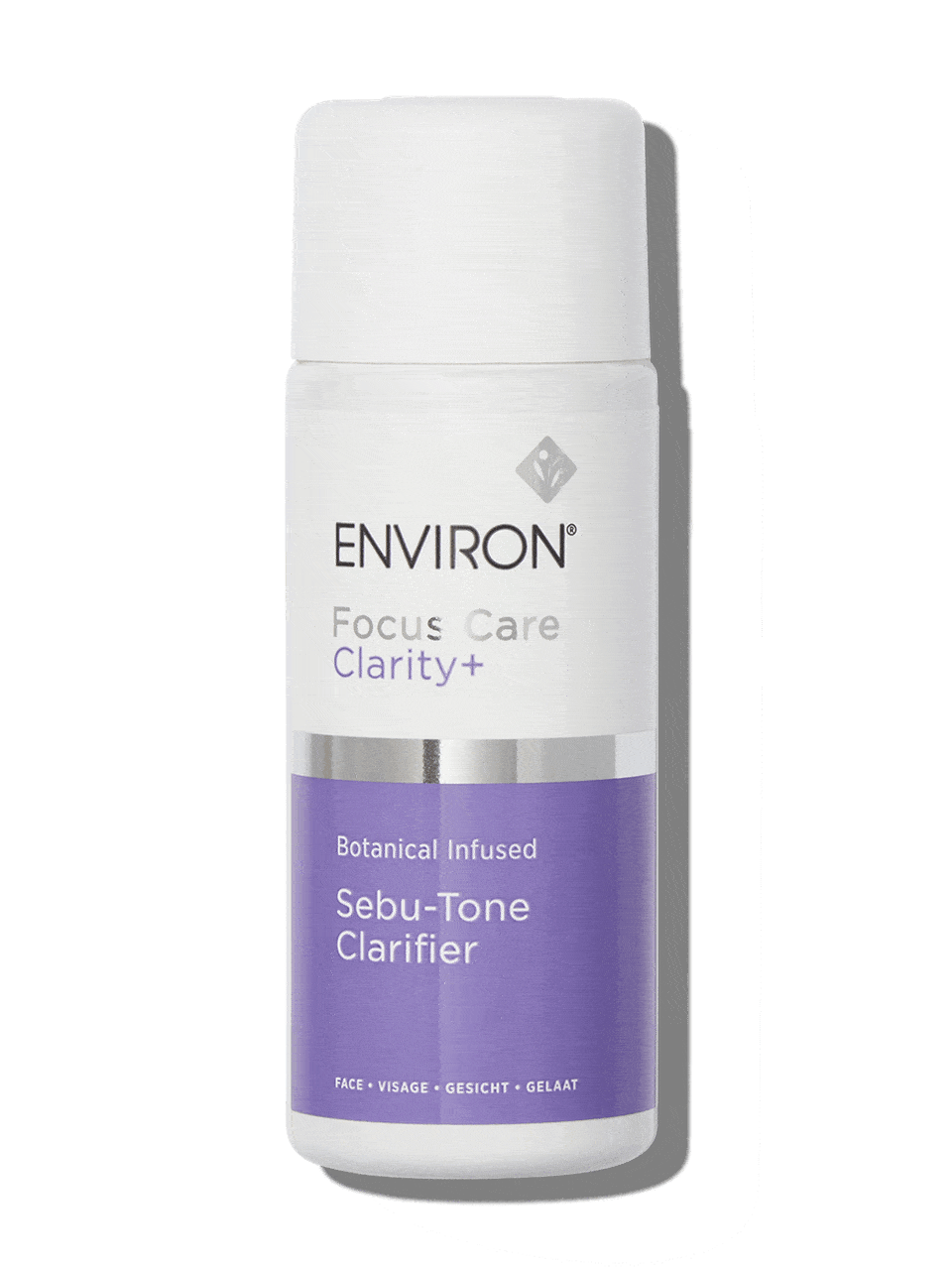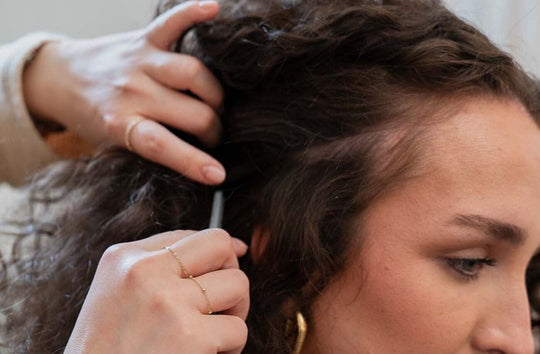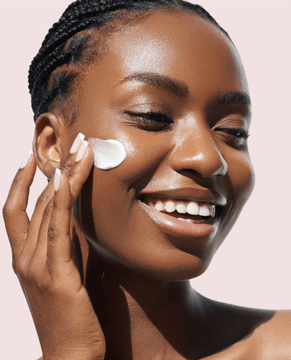Glycolic Acid vs Salicylic Acid: Which is Right for Your Skin?
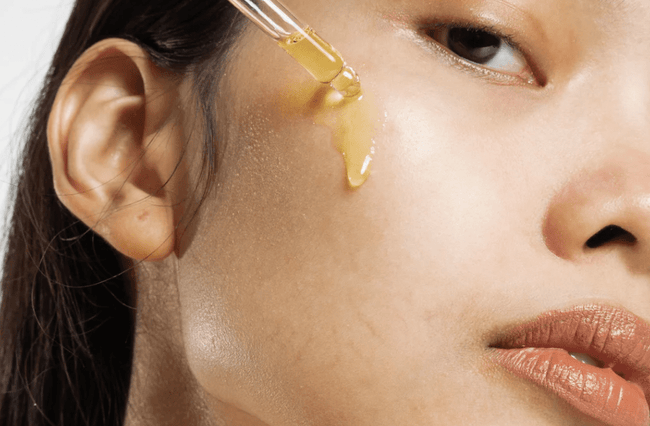
Glycolic Acid vs Salicylic Acid: Which is Right for Your Skin?
Using acid on your skin may sound intimidating at first. But once you learn the basics between the two most popular hydroxy acids, it's easy to understand which ingredient is right for your skin.
Alpha hydroxy acids (AHAs) are a group of naturally occurring, water-soluble acids used topically to treat dry skin, wrinkles, or acne. Beta Hydroxy Acids (BHAs) are oil-soluble, making them great at clearing clogged pores and helping regulate sebum production.
When it comes to the difference between glycolic acid vs salicylic acid, there isn't one I favor more than the other. Rather it comes down to your specific skin type and what results you want to achieve.
Here's the breakdown of glycolic acid vs salicylic acid, along with how to use each ingredient in your routine to achieve the best results.
What is Glycolic Acid?
Glycolic acid is an Alpha Hydroxy Acid (AHA) that exfoliates the skin, promotes cell turnover, and targets concerns such as uneven skin tone, texture, hyperpigmentation, and fine lines.
Glycolic acid is a natural substance extracted from sugarcane, although it is usually replicated in a laboratory setting. It's water-soluble, which means it dissolves in water and has a small molecular shape, allowing for optimal product penetration. Glycolic acid dissolves and removes dead skin cells on the epidermis (outer layer of the skin), revealing a brighter and softer complexion.
Glycolic acid is popular, so you've likely seen it as an ingredient in skincare products such as toners, serums, masks, and cleansers.
What is Salicylic Acid?
Salicylic acid, which comes from the bark of a willow tree, is a popular Beta Hydroxy Acid (BHA) that penetrates deep into the pores dissolving acne-causing oil and bacteria and reducing inflammation.
Salicylic acid is an exfoliant like glycolic acid, but because it is oil-soluble, it can effectively dissolve oil (sebum), treating acne, blackheads, and overly oily skin. The ingredient is commonly found in cleansers, toners, serums, and ointments. You can use them once daily, followed by a light moisturizer.
You can find salicylic acid in various strengths and adjust it according to your sensitivity and skin conditions.
Differences Between Glycolic and Salicylic Acid
Glycolic acid and salicylic acid are both chemical exfoliators, but despite this similarity, they differ in several ways. Here are the main distinctions and benefits between the two.
Glycolic Acid:
- Water-soluble
- Works on the surface of the skin
- Diminishes hyperpigmentation and dark spots
- Reduces fine lines and wrinkles
- Brightens the complexion
Salicylic Acid:
- Oil–soluble
- Works deep into the pores
- Removes excess oil that clogs pores
- Prevents and treats breakouts
- Possesses anti-inflammatory properties
Choosing the Right Ingredient for Your Skin
Each acid has its own set of benefits that will naturally suit certain skin concerns.
Glycolic Acid is best suited for:
- Mature skin
- Normal, dry, and dull skin
- Gentle enough for most skin types (except reactive skin and sensitive skin)
Salicylic Acid is best suited for:
- Oily skin
- Acneic skin
- May cause dryness and irritation in dehydrated or sensitive skin
Incorporating Glycolic and Salicylic Acid into Your Skincare Routine
Protecting your natural skin barrier is key to a non-invasive skincare routine. So, how you use chemical exfoliators is crucial to minimizing side effects and maximizing benefits.
Whenever you introduce an acid to your skin, you'll want to start with a lower strength and slowly work your way up to see how your skin tolerates it, especially if you have mature, dry, or sensitive skin.
Patch-testing new products is always a good idea too. You can also seek out formulations with soothing ingredients like ceramides and niacinamide in your moisturizer to rebalance your complexion.
Glycolic and salicylic acid should not be used any more than once daily. Start with once or twice a week, and work up to every other night until you begin to see results. I don't recommend mixing glycolic acid with salicylic acid unless you are doing acne spot treatments or under the supervision of a dermatologist or esthetician.
Your skin is more susceptible to sun damage when using AHAs and BHAs, so incorporating your acids into your nighttime routine is critical. And to avoid irritation, don't mix different exfoliating products or retinoids with acids because you risk dismantling the skin's barrier function — instead, alternate days between your exfoliating acids and vitamin A products.
Precautions to take when using glycolic acid
Glycolic acid is a great addition to your skincare routine, but to maximize its effectiveness and ensure your healthiest skin, you should be mindful of a few key tips. Because glycolic acid is a powerful exfoliating ingredient, it’s important to exercise caution if you incorporate it into your routine.
I recommend taking the following precautions when you start using glycolic acid:
- Avoid using multiple products with glycolic acid at one time
- Steer clear from products with glycolic acid if you have sensitive skin
- Consult your dermatologist before combining acne medication with other cosmetics
- Do not use glycolic acid after treatments that remove the top layer of the skin, like microdermabrasion
- Avoid using products with glycolic acid when spending time in the sun
- Consult your doctor before use if you’re currently pregnant, breastfeeding, or hoping to become pregnant
- Always use sunscreen rated SPF 50 or higher when using products with glycolic acid
- Avoid using products with glycolic acid if you’re also receiving laser treatments
In addition to the above, it’s important to emphasize that you should introduce glycolic acid slowly. Everyone is different, so you should take time to understand how your skin will react to the ingredient.
Be sure to start with using products once or twice per week at a maximum and consult your dermatologist in the process. Pay close attention to how your skin reacts and work your way up from there.
Precautions to take when using salicylic acid
The precautions you should take for salicylic acid are similar to those for glycolic acid. Because salicylic acid is so powerful, the key is to avoid overloading your skin with high concentrations and prevent irritation. Sun protection should also be a strong priority—always use a sunscreen rated SPF 50 or higher when using salicylic acid.
Additionally, I recommend the following precautions when incorporating salicylic acid:
- Avoid using salicylic acid if you have sensitive skin.
- Stick to products with lower concentrations of salicylic acid.
- Avoid using products with salicylic acid before sun exposure.
- Avoid using multiple products with salicylic acid at the same time.
- Consult your doctor beforehand if you are currently pregnant, breastfeeding, or hoping to become pregnant.
- Don’t use salicylic acid at the same time as receiving laser treatments.
Whenever you start using a new cosmetic product with new active ingredients, it’s always best to consult your dermatologist, esthetician, or general healthcare provider—this is an especially significant rule to follow for using products with glycolic acid, salicylic acid, lactic acid, or retinoids.
Can I use glycolic acid and salicylic acid together?
Yes, you can use glycolic and salicylic acid together, but I only recommend it in certain circumstances. Again, you should really only use these two ingredients together if you’re doing acne spot treatments or using these products under the close supervision of a dermatologist or esthetician. Otherwise, using one or the other is often enough.
Because both of these acids are strong exfoliating ingredients, mixing these two ingredients can cause irritation, redness, or dryness if not careful. If your dermatologist or esthetician recommends using these two ingredients together, they will likely support using them only in low concentrations and introducing products slowly.
If you do use them together, both ingredients should be present in the same product since too high of a percentage of each is likely to cause irritation.
The same goes for mixing salicylic or glycolic acid with other strong exfoliating ingredients like lactic acid or retinoids. If you also incorporate lactic acid, be sure that it’s present in the same product as the other acids. You can use salicylic acid or glycolic acid with retinol, but not every day.
Final Verdict: Which Ingredient is Right for You?
As you can see, glycolic acid and salicylic acid are both skincare heroes when used to treat the correct complexions. Suppose you're looking to lighten hyperpigmentation from age or sun damage. Or, you want to brighten a lackluster complexion. Glycolic acid may be a suitable treatment for these concerns. Whereas salicylic acid will help treat stubborn breakouts, congested pores, and oily skin.
Maybe you have combination skin, or you're still not sure which acid is right for you. That's perfectly okay, and it may even be vital for you to refer to a professional. You can book a virtual consultation to get the best advice from our team of experts from the comfort of your couch.
The key to beautiful skin isn't in a quick fix. It comes with intention, patience, and a healthy lifestyle. So, if neither of these ingredients works for you, there are several other exfoliating acids to choose from for radiant skin.
